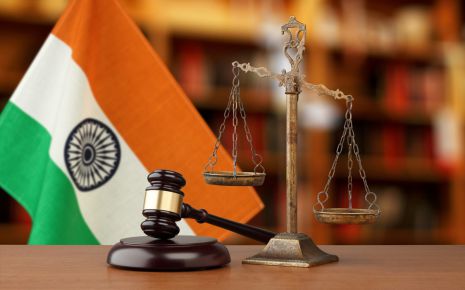Reproductive Rights Of Women In India: A Struggle For Autonomy And Equality
Females are biologically gifted with the ability to conceive as they are
believed to be the most susceptible to the endurance and ability to endure the
agony and discomfort associated with childbirth. The irony, however, is that
today they are being taken advantage of by having their right to decide whether
to have children or not taken away under the guise of such benediction.
The most discussed topic in contemporary society, where equality for all human denominations is sought after to surpass the patriarchal world, is reproduction and the freedom to reproduce. The right to reproduce encompasses the following: the right to an abortion, fertility treatments, overall wellness, access to information, and the finest medical care.
Reproductive geography is based on the feminist idea of the reproductive body being the most sensitive arena for political struggle. An ancient element of quantifiable demographic geology was reproduction. The feminist, Black, postcolonial, and critical theories have encouraged more modern spatial work on reproduction to confront the uneven geographies of access to reproductive health and justice places. Reproductive geographies examine the locations, movements, and customs associated with conception, pregnancy, and birth.
Second-wave feminism expanded the discussion to cover a broader range of topics, such as sexuality, family, domesticity, the workplace, reproductive rights[1], and de facto inequalities. In contrast, first-wave feminism concentrated primarily on suffrage and eliminating legal barriers to gender equality. However, abortion was the primary concern of second-wave feminists in the 1970s[2] because they felt that any other advancements gained by the movement would be of little value until women had complete control over their bodies.
The right to procreate raises a woman's right to individual autonomy. The rights of women to be born are juxtaposed against the rights of those already in existence. In a country like India, the reality is a tug of war between the autonomy of a woman's self versus that of a female child who has society against her existence.
Although both men and women share equal responsibility for child procreation, only women can give birth and bring new life into the world. However, it is saddening to learn that mothers frequently have little to no influence in decisions regarding a child's birth or anything else related to it after it is born. Furthermore, a son is always identified as the father's "vansh" in a patriarchal society[3] like India because he shall carry the name of the family ahead. He is how history shall remember the family.
Reproduction has always been a fundamental aspect of society from its inception, but it wasn't long before it came to the attention of many organizations and stakeholders as a problem. It has to do with a person's overall health, a woman's emotional and mental well-being, and human growth.
The rising rates of death and morbidity worldwide serve as an alarm. Several nations, including China, Bangladesh, India, the US, Africa, and others, have acknowledged it as a social issue that affects all of us. The welfare of families is now at risk due to the high rates of infant and maternal mortality brought on by inadequate and poor services.
Pregnancies that are unintended and immature are a common problem for women, and they can cause symptoms including lower abdomen pain, heavy bleeding, white discharge, and irregular menstrual cycles. All of these are effects of a lack of family planning, which can occasionally result in unsafe abortion and foeticide. Policymakers and administrators have worked to raise awareness on these issues over time, but the sexual health-related conversation is still taboo because it is so deeply ingrained in people's psyches.
A human right to reproduce includes the freedom to choose whether or not to have children, the right to abortion, fertility therapy, and the right to reproductive health. However, the right to a dignified life is taken away through forced sterilization, restrictions on the use of contraception that led to unwanted pregnancies, and other forms of decision-making control.
Numerous variables contribute to childbirth, including pornography, sexual violence, lack of consent, prostitution, sadomasochism, rape, human trafficking, female genital mutilation, and marriage. These include pregnancies against the will of the woman and may lead to evil and uncertain consequences affecting the right of a woman to live with her choices.
In recent years, many countries, notably those in the developed world, have liberalized their rules governing reproduction. According to statistics, there are around 73 million abortions performed every year throughout the world.[4] The average abortion rate decreased by 43% between 1990�1994 and 2015�19, excluding China and India, in nations where abortion is generally allowed. On the other hand, nations with strong restrictions saw an increase of almost 12%[5] in the average abortion rate.
The expansion of reproductive rights became much more effective than before with the advent of human rights recognition in numerous nations around the world, and access to reproductive health care services and precautions regarding the abortion procedure are some of the primary concerns being featured. Globally, these rules vary; while some nations have strict laws, others have flexible policies that are widely accepted.
WHO estimates that complications from unsafe abortions account for 5�13% of maternal fatalities worldwide, with developing countries accounting for the great majority of these cases. However, several nations have recently resisted the advancement of women's and reproductive rights.
Although there are significant differences in the legal status of abortion, the majority of nations allow it in certain situations, such as those involving socio-economic concerns, and dangers to the woman's physical or mental health. On the other hand, it is entirely prohibited in approximately a dozen nations. Some, though, permit it without any formalities.
Additionally, there has been a global trend toward the relaxation of abortion laws. About 38 nations have altered their abortion laws, with Nicaragua being the one to broaden the legal justifications for women to obtain abortions.[6]Additionally, with certain gestational restrictions, countries like Argentina and Thailand legalized abortion in 2020. Along with South Korea and New Zealand, Mexico decriminalized it and loosened its limitations.
While many countries are moving to broaden the legal justifications for abortion, others like the US and Honduras are tightening these limits.
States' responsibility is to protect women's rights including ensuring access to comprehensive reproductive health information and services[7], as well as having positive reproductive health outcomes like lower rates of unsafe abortion and maternal mortality and the ability to make fully informed decisions about their sexuality and reproduction without fear of violence, discrimination, or coercion.
End-Notes:
The most discussed topic in contemporary society, where equality for all human denominations is sought after to surpass the patriarchal world, is reproduction and the freedom to reproduce. The right to reproduce encompasses the following: the right to an abortion, fertility treatments, overall wellness, access to information, and the finest medical care.
Reproductive geography is based on the feminist idea of the reproductive body being the most sensitive arena for political struggle. An ancient element of quantifiable demographic geology was reproduction. The feminist, Black, postcolonial, and critical theories have encouraged more modern spatial work on reproduction to confront the uneven geographies of access to reproductive health and justice places. Reproductive geographies examine the locations, movements, and customs associated with conception, pregnancy, and birth.
Second-wave feminism expanded the discussion to cover a broader range of topics, such as sexuality, family, domesticity, the workplace, reproductive rights[1], and de facto inequalities. In contrast, first-wave feminism concentrated primarily on suffrage and eliminating legal barriers to gender equality. However, abortion was the primary concern of second-wave feminists in the 1970s[2] because they felt that any other advancements gained by the movement would be of little value until women had complete control over their bodies.
The right to procreate raises a woman's right to individual autonomy. The rights of women to be born are juxtaposed against the rights of those already in existence. In a country like India, the reality is a tug of war between the autonomy of a woman's self versus that of a female child who has society against her existence.
Although both men and women share equal responsibility for child procreation, only women can give birth and bring new life into the world. However, it is saddening to learn that mothers frequently have little to no influence in decisions regarding a child's birth or anything else related to it after it is born. Furthermore, a son is always identified as the father's "vansh" in a patriarchal society[3] like India because he shall carry the name of the family ahead. He is how history shall remember the family.
Reproduction has always been a fundamental aspect of society from its inception, but it wasn't long before it came to the attention of many organizations and stakeholders as a problem. It has to do with a person's overall health, a woman's emotional and mental well-being, and human growth.
The rising rates of death and morbidity worldwide serve as an alarm. Several nations, including China, Bangladesh, India, the US, Africa, and others, have acknowledged it as a social issue that affects all of us. The welfare of families is now at risk due to the high rates of infant and maternal mortality brought on by inadequate and poor services.
Pregnancies that are unintended and immature are a common problem for women, and they can cause symptoms including lower abdomen pain, heavy bleeding, white discharge, and irregular menstrual cycles. All of these are effects of a lack of family planning, which can occasionally result in unsafe abortion and foeticide. Policymakers and administrators have worked to raise awareness on these issues over time, but the sexual health-related conversation is still taboo because it is so deeply ingrained in people's psyches.
A human right to reproduce includes the freedom to choose whether or not to have children, the right to abortion, fertility therapy, and the right to reproductive health. However, the right to a dignified life is taken away through forced sterilization, restrictions on the use of contraception that led to unwanted pregnancies, and other forms of decision-making control.
Numerous variables contribute to childbirth, including pornography, sexual violence, lack of consent, prostitution, sadomasochism, rape, human trafficking, female genital mutilation, and marriage. These include pregnancies against the will of the woman and may lead to evil and uncertain consequences affecting the right of a woman to live with her choices.
In recent years, many countries, notably those in the developed world, have liberalized their rules governing reproduction. According to statistics, there are around 73 million abortions performed every year throughout the world.[4] The average abortion rate decreased by 43% between 1990�1994 and 2015�19, excluding China and India, in nations where abortion is generally allowed. On the other hand, nations with strong restrictions saw an increase of almost 12%[5] in the average abortion rate.
The expansion of reproductive rights became much more effective than before with the advent of human rights recognition in numerous nations around the world, and access to reproductive health care services and precautions regarding the abortion procedure are some of the primary concerns being featured. Globally, these rules vary; while some nations have strict laws, others have flexible policies that are widely accepted.
WHO estimates that complications from unsafe abortions account for 5�13% of maternal fatalities worldwide, with developing countries accounting for the great majority of these cases. However, several nations have recently resisted the advancement of women's and reproductive rights.
Although there are significant differences in the legal status of abortion, the majority of nations allow it in certain situations, such as those involving socio-economic concerns, and dangers to the woman's physical or mental health. On the other hand, it is entirely prohibited in approximately a dozen nations. Some, though, permit it without any formalities.
Additionally, there has been a global trend toward the relaxation of abortion laws. About 38 nations have altered their abortion laws, with Nicaragua being the one to broaden the legal justifications for women to obtain abortions.[6]Additionally, with certain gestational restrictions, countries like Argentina and Thailand legalized abortion in 2020. Along with South Korea and New Zealand, Mexico decriminalized it and loosened its limitations.
While many countries are moving to broaden the legal justifications for abortion, others like the US and Honduras are tightening these limits.
States' responsibility is to protect women's rights including ensuring access to comprehensive reproductive health information and services[7], as well as having positive reproductive health outcomes like lower rates of unsafe abortion and maternal mortality and the ability to make fully informed decisions about their sexuality and reproduction without fear of violence, discrimination, or coercion.
End-Notes:
- Burkett, Elinor. "women's rights movement". Encyclopedia Britannica, 26 Aug. 2023, https://www.britannica.com/event/womens-movement. Accessed 30 September 2023.
- Hayley Marina Brown, A Woman's Right to Choose: Second Wave Feminist Advocacy of Abortion Law Reform in New Zealand and New South Wales from the 1970s, University of Canterbury, 2004
- Mann, Susan Archer, and Douglas J. Huffman. "The Decentering of Second Wave Feminism and the Rise of the Third Wave." Science & Society, vol. 69, no. 1, 2005, pp. 56�91. JSTOR, http://www.jstor.org/stable/40404229. Accessed 30 Sept. 2023.
- World Health Organization on "Abortion" dated 25th November 2021
- "Abortion Law: Global Comparisons", Article by Women and Foreign Policy Program Staff, Council on Foreign Relations, dated 20th September, 2023 available at https://www.cfr.org/article/abortion-law-global-comparisons
- "Nicaragua: Abortion Ban Threatens Health and Lives", dated July 31, 2017
- Centre for Reproductive Rights, Reproductive Rights in Indian Courts, available at https://reproductiverights.org/sites/default/files/documents/Reproductive-Rights-In-Indian-Courts.pdf
Law Article in India
Legal Question & Answers
Lawyers in India - Search By City
LawArticles
How To File For Mutual Divorce In Delhi

How To File For Mutual Divorce In Delhi Mutual Consent Divorce is the Simplest Way to Obtain a D...
Increased Age For Girls Marriage

It is hoped that the Prohibition of Child Marriage (Amendment) Bill, 2021, which intends to inc...
Facade of Social Media

One may very easily get absorbed in the lives of others as one scrolls through a Facebook news ...
Section 482 CrPc - Quashing Of FIR: Guid...

The Inherent power under Section 482 in The Code Of Criminal Procedure, 1973 (37th Chapter of t...
The Uniform Civil Code (UCC) in India: A...

The Uniform Civil Code (UCC) is a concept that proposes the unification of personal laws across...
Role Of Artificial Intelligence In Legal...

Artificial intelligence (AI) is revolutionizing various sectors of the economy, and the legal i...







Please Drop Your Comments